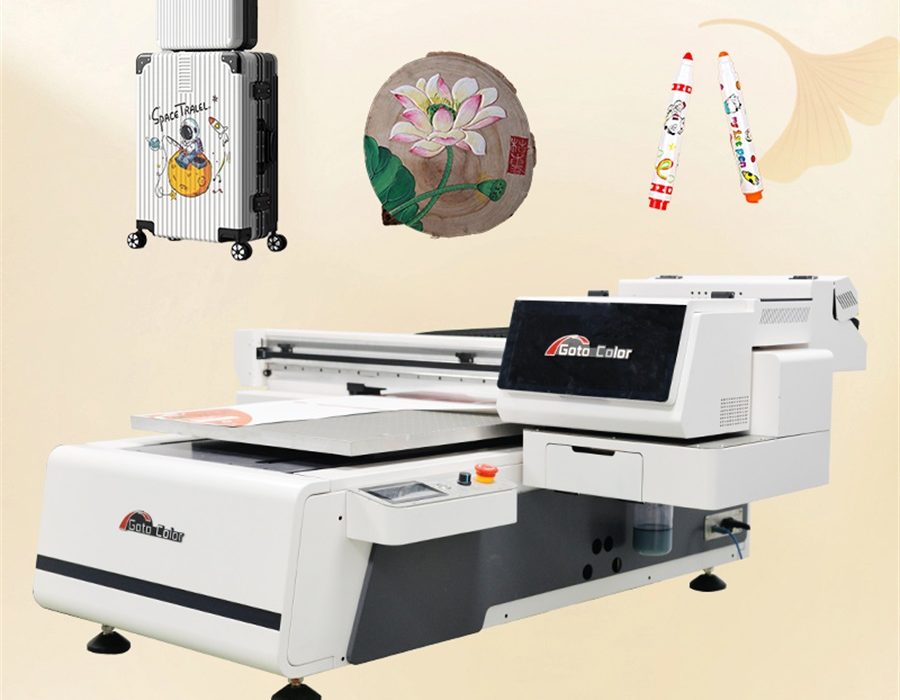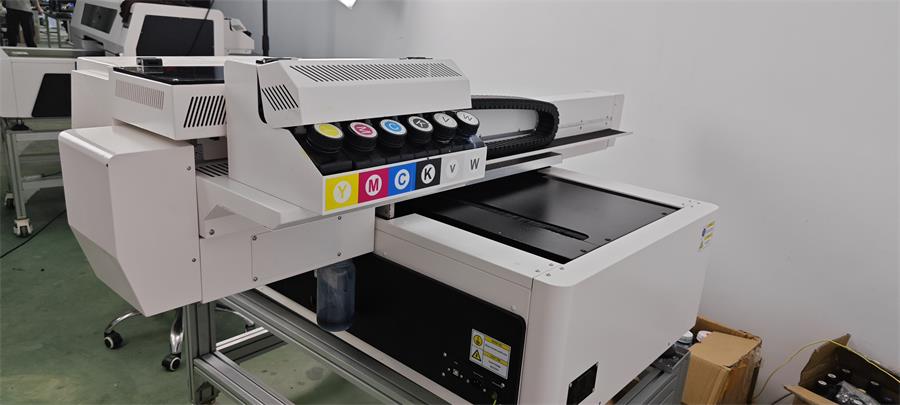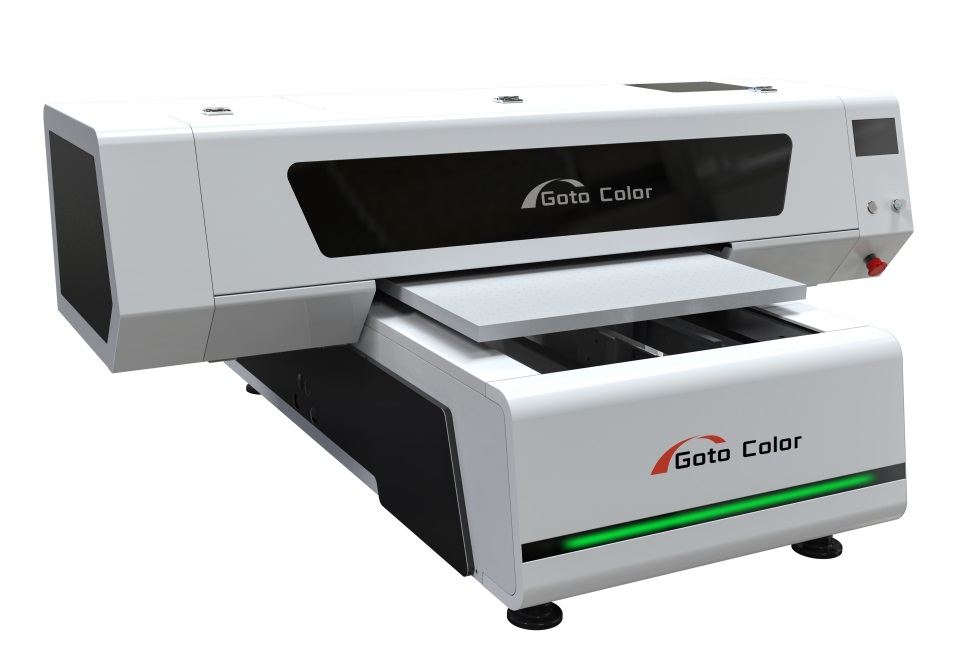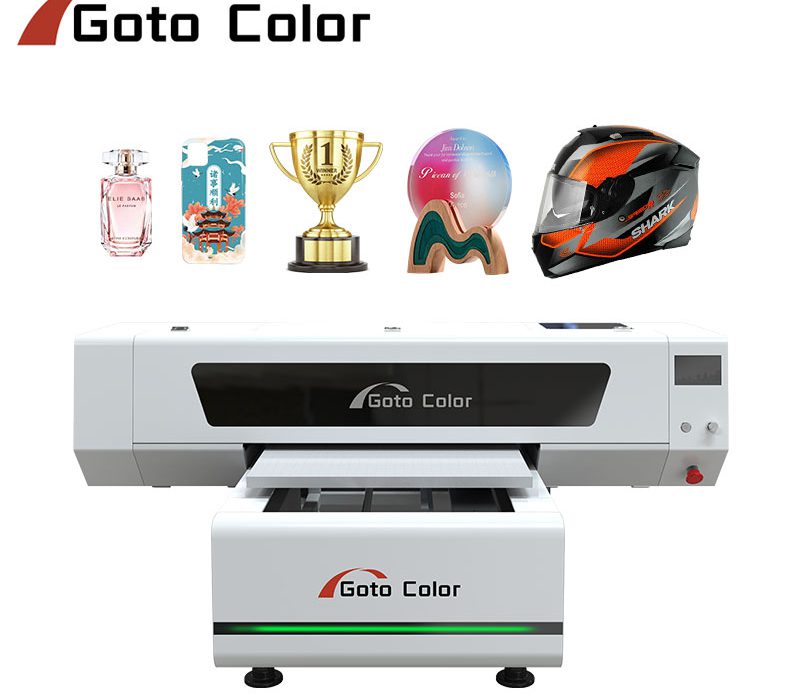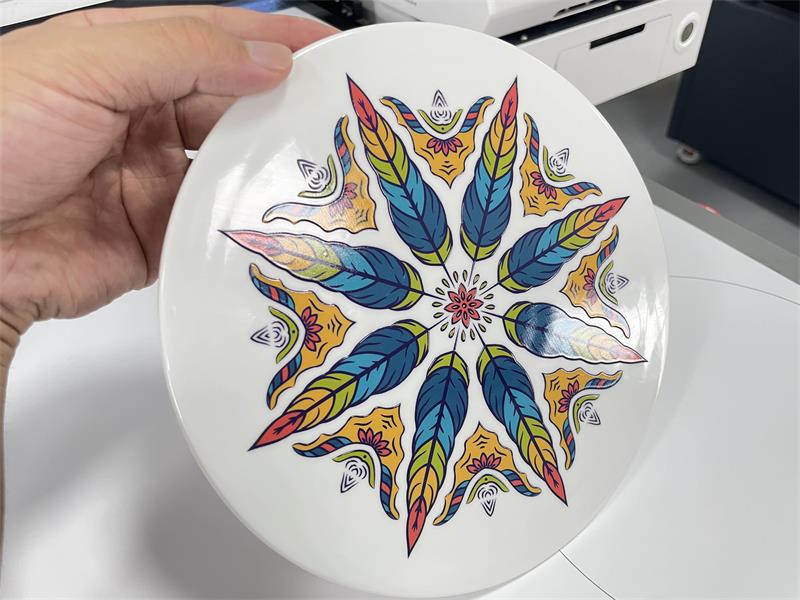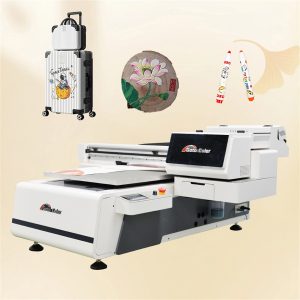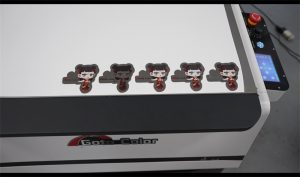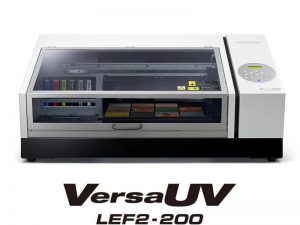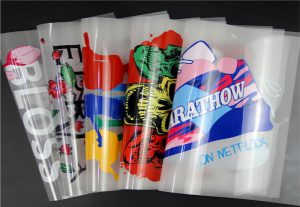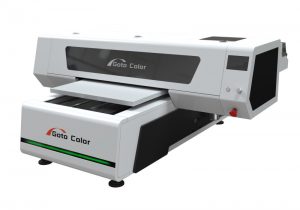①UV Flatbed Printing Machine
What’s UV Printing Technology
UV printing is a digital process that uses ultraviolet light to instantly cure specially formulated UV inks. It allows printing on a wide range of materials such as glass, metal, wood, and plastic with high precision and durability. The technology produces vibrant, scratch-resistant, and weatherproof prints while being environmentally friendly. It’s widely used in signage, packaging, and customized product decoration.

UV (Ultra-Violet) printing technology stands at the forefront of modern printing innovation. With a speed of up to 6 square meters per hour, it delivers precise, reliable, and high-quality results across a wide range of indoor and outdoor applications. From roll-to-roll to flatbed and LED UV printers, this technology caters to the evolving demands of the global signage, display, and industrial printing markets.
What Can a UV Flatbed Printer Do
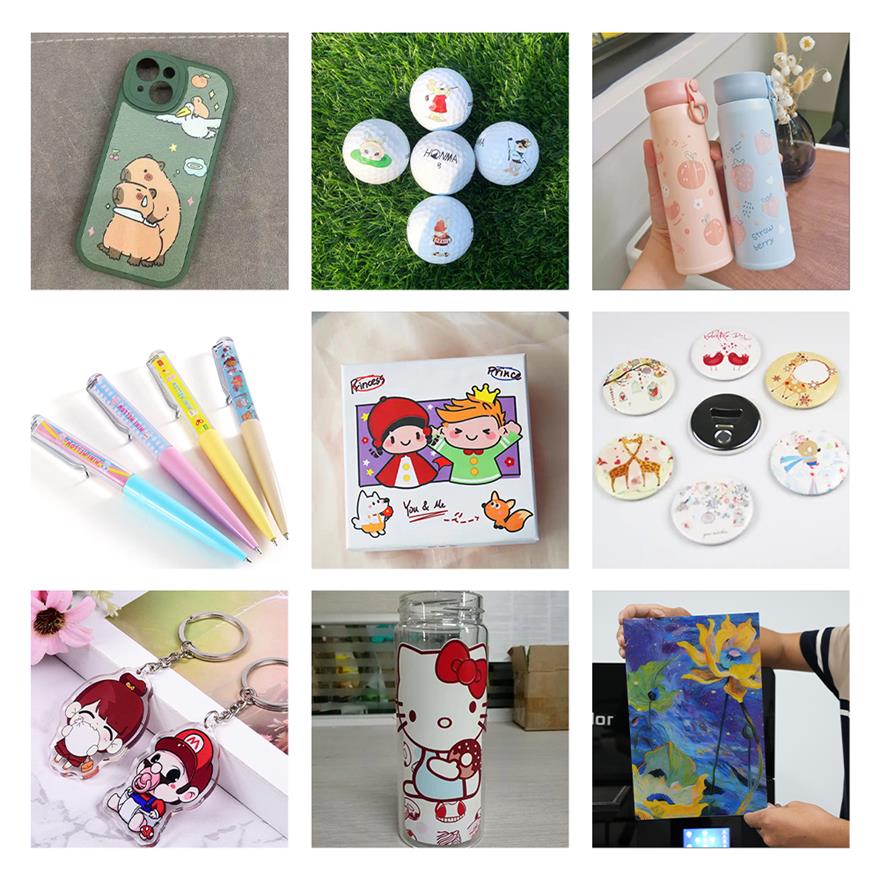
Engineered with efficient technology, UV printers ensure long-lasting color stability and extended print life, making them a smart investment for businesses seeking high ROI and profitability. Capable of printing on diverse materials, UV printing transforms creative ideas into real products quickly and effectively — a perfect solution for today’s competitive printing industry.
Dowin Commercial UV Flatbed Printers

Dowin has established itself as a trusted manufacturer in the UV printing industry, known for its consistent quality and technical innovation. Backed by advanced production facilities and strict quality control, Dowin delivers a full range of UV flatbed and roll-to-roll printers that meet the demands of global markets. Through long-term OEM partnerships and tailored solutions, we support brands and distributors worldwide in expanding their product portfolios and strengthening their market presence.
Click to learn more about this product…
②UV DTF Printer Roll to Roll
What’s A UV DTF Printer
A UV DTF (Direct-to-Film) printer is an advanced digital printing system that prints UV-curable ink directly onto a special transfer film instead of printing on the final object. The printed film is then laminated with an adhesive layer and transferred onto the desired surface using light pressure—no heat or pretreatment required. This method preserves fine details, rich textures, and gloss effects, producing a premium, durable finish.
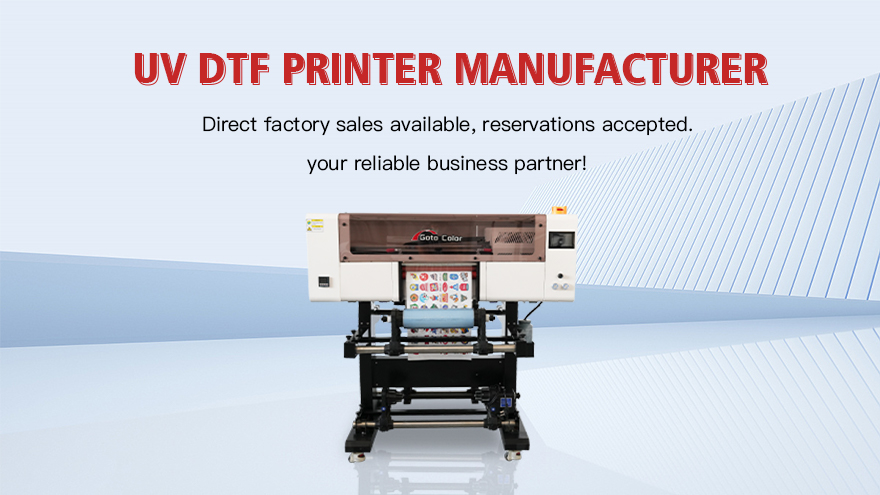
Unlike traditional UV flatbed printing, UV DTF technology makes it possible to decorate irregular, curved, or uneven surfaces such as bottles, cups, phone cases, and packaging. It combines the flexibility of transfer printing with the high definition and durability of UV curing, offering an efficient, versatile, and cost-effective solution for personalized and industrial decoration.
What UV DTF Printers Can Do
UV DTF printers open up wide creative and commercial possibilities by allowing high-quality prints to be transferred onto almost any hard surface. They can produce vivid, textured, and durable designs for personalized products such as cups, bottles, phone cases, helmets, gift boxes, and packaging. With strong adhesion and resistance to water, scratches, and UV light, the prints maintain their color and gloss for a long time. The UV DTF process eliminates complex pretreatment steps, supports small-batch or on-demand production, and delivers a premium finish suitable for both customized and industrial applications.

Click to learn more about this product…
Difference Between UV Flatbed Printer and UV DTF Printer
A UV flatbed printer prints UV-curable ink directly onto the surface of an object. The ink is instantly cured by UV LED light, forming a durable, scratch-resistant image. It works best with flat or slightly uneven materials such as acrylic, glass, metal, wood, and ceramic. This method provides precise color registration and supports multi-layer effects like 3D texture and gloss varnish. However, it is less suitable for irregular, curved, or flexible surfaces.
A UV DTF (Direct-to-Film) printer, on the other hand, first prints the image on a special PET film, then laminates it with adhesive before transferring it onto the target object. This process allows easy decoration of irregular or curved items — such as bottles, cups, and phone cases — that are difficult to print on directly. UV DTF printing offers greater flexibility and lower setup requirements, while UV flatbed printing delivers higher accuracy and stronger adhesion on rigid substrates.
FAQs
Q: Can a UV printer print on any surface?
A: UV printers are highly versatile and can print on a wide range of materials, including wood, plastic, metal, ceramic, leather, PET, acrylic, and glass. For very smooth surfaces like mirrors or glass, a coating layer is recommended to improve ink adhesion.
Q: Is UV printing durable and washable?
A: Yes. When printed with Dowin’s UV ink, the output is waterproof, fade-resistant, and highly scratch-resistant, making it suitable for both indoor and outdoor use.
Q: Does UV printing require a heat press?
A: No. UV printers use UV LED lamps to cure the ink instantly during printing, eliminating the need for a heat press or drying process.
Q: What can be printed with a UV flatbed printer?
A: UV flatbed printers can print directly on nearly any flat material, such as phone cases, medals, leather, packaging boxes, ceramics, wood, PVC, and promotional items. With the help of customized jigs, they can also handle curved products like cups or golf balls.
Q: How is a UV printer different from a UV DTF printer?
A: A UV printer prints directly onto the surface of an object, while a UV DTF printer first prints the image onto a PET film before transferring it to the final material. The UV DTF method extends the capabilities of UV printing by allowing decoration on irregular and curved surfaces.

